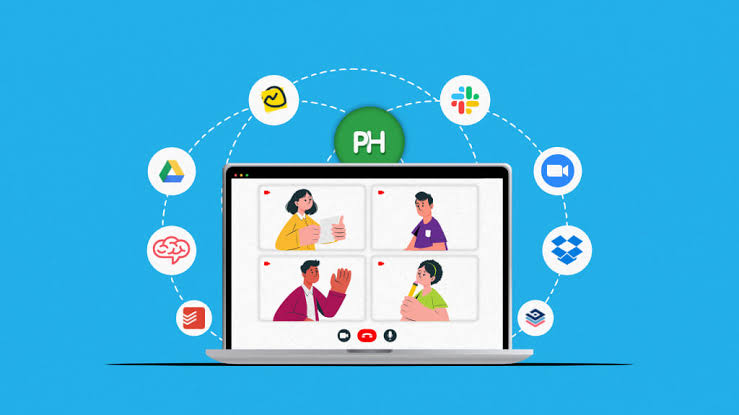Remote work has transformed how professionals across the globe approach their daily tasks. While it offers flexibility and comfort, it also demands self-discipline and structure to remain efficient. One of the key drivers of success in remote work environments is using the right productivity tools. These tools help remote workers manage their time, collaborate with teams, track progress, and stay focused throughout the day.
Below are essential categories and specific tools that every remote worker should consider to improve daily workflow and overall productivity.
Task Management Tools to Stay Organized
Staying on top of daily assignments and long-term goals is vital when working remotely. Task management tools help professionals break down workloads into manageable pieces.
- Trello: A visual project board system that allows workers to create tasks, add deadlines, assign collaborators, and track progress with ease.
- Asana: Ideal for team project tracking, it offers timeline views, task dependencies, and status updates.
- Todoist: Simple and effective for individual use, it supports recurring tasks, priorities, and integration with other productivity apps.
These platforms eliminate confusion, encourage accountability, and help remote workers stay organized.
Time Tracking Tools for Accountability
Remote workers must be aware of how they spend their hours. Time tracking tools improve accountability and ensure work hours are optimized.
- Toggl Track: A lightweight tracker that monitors time spent on specific projects or tasks.
- Clockify: Great for freelancers or teams, offering time logs, project tracking, and billable hour summaries.
- RescueTime: Runs in the background and gives detailed reports on how time is spent across apps and websites.
These tools help workers evaluate habits and make necessary adjustments for improved efficiency.
Communication Tools for Collaboration
Clear communication is essential in remote teams. Email alone is no longer sufficient; workers need real-time and asynchronous messaging options.
- Slack: Widely used for team chats, group discussions, and quick updates without the need for emails.
- Microsoft Teams: Combines chat, video, and document collaboration in one platform.
- Zoom: One of the most reliable tools for virtual meetings, webinars, and face-to-face discussions.
These tools ensure that collaboration and connection remain strong, regardless of physical distance.
Cloud Storage Tools for Easy File Access
Remote workers need access to files from any device and location. Cloud storage platforms ensure that documents are accessible and shareable at all times.
- Google Drive: Offers ample storage space and seamless collaboration on documents, sheets, and slides.
- Dropbox: Easy to use with good sharing controls, useful for file storage and client collaboration.
- OneDrive: Integrated well with Microsoft products and great for corporate environments.
Cloud platforms also ensure data backups and reduce the risks associated with local storage.
Focus Tools to Minimize Distractions
Working from home often comes with distractions. Focus tools help remote workers maintain concentration and structure their day.
- Forest: Encourages focus by gamifying productivity—stay focused, grow a virtual tree.
- Pomofocus: A digital timer based on the Pomodoro Technique, promoting focused work sessions with regular breaks.
- Cold Turkey: A website blocker that prevents access to time-wasting sites during work hours.
These tools support discipline, helping workers get more done in less time.
Note-Taking Tools to Capture Ideas
Remote work involves constant learning, brainstorming, and content creation. Good note-taking tools help workers retain and retrieve information effectively.
- Notion: Combines note-taking, task management, and database creation in one customizable interface.
- Evernote: Popular for organizing notes, voice memos, and web clippings.
- Microsoft OneNote: Offers a digital notebook experience with easy syncing across devices.
These tools act as digital knowledge bases, supporting creativity and organization.
Scheduling Tools to Plan Your Day
Proper scheduling prevents task overlap and ensures time is allocated wisely.
- Google Calendar: Syncs across devices and integrates with most other apps for event scheduling and reminders.
- Calendly: Eliminates the back-and-forth of scheduling by letting others book time slots based on your availability.
- Outlook Calendar: Perfect for users in Microsoft-based environments with strong email-calendar integration.
Scheduling tools bring structure to remote work and reduce confusion around meetings and deadlines.
Project Collaboration Platforms
For teams working on joint deliverables, centralized collaboration tools streamline the process.
- Basecamp: Combines message boards, to-do lists, document sharing, and timelines.
- ClickUp: Offers all-in-one project management, including task tracking, time tracking, document sharing, and reporting.
- Airtable: Blends spreadsheets and databases for collaborative data management.
These tools enable smooth workflows and transparency across distributed teams.
Automation Tools for Routine Tasks
To boost efficiency, automating repetitive tasks can save hours each week.
- Zapier: Connects apps and automates workflows, such as syncing calendar events with tasks or saving email attachments directly to cloud storage.
- IFTTT: Allows users to create simple conditional statements that automate everyday digital tasks.
- Make (formerly Integromat): Automates multi-step business processes without the need for coding.
Automation frees up mental space and reduces human error in routine tasks.
Conclusion: Building a Custom Productivity Toolkit
The key to success in remote work isn’t just about having tools—it’s about using the right combination that fits your working style and job requirements. By combining task managers, communication platforms, time trackers, and focus aids, remote professionals can create a well-rounded productivity system. Regularly evaluating tool performance and staying open to new solutions ensures that your remote work setup remains efficient, flexible, and aligned with your goals.



